Basic Sourdough Sweet Dough
A basic sourdough sweet dough recipe that makes the best cinnamon rolls, blueberry rolls, sticky buns, and more!
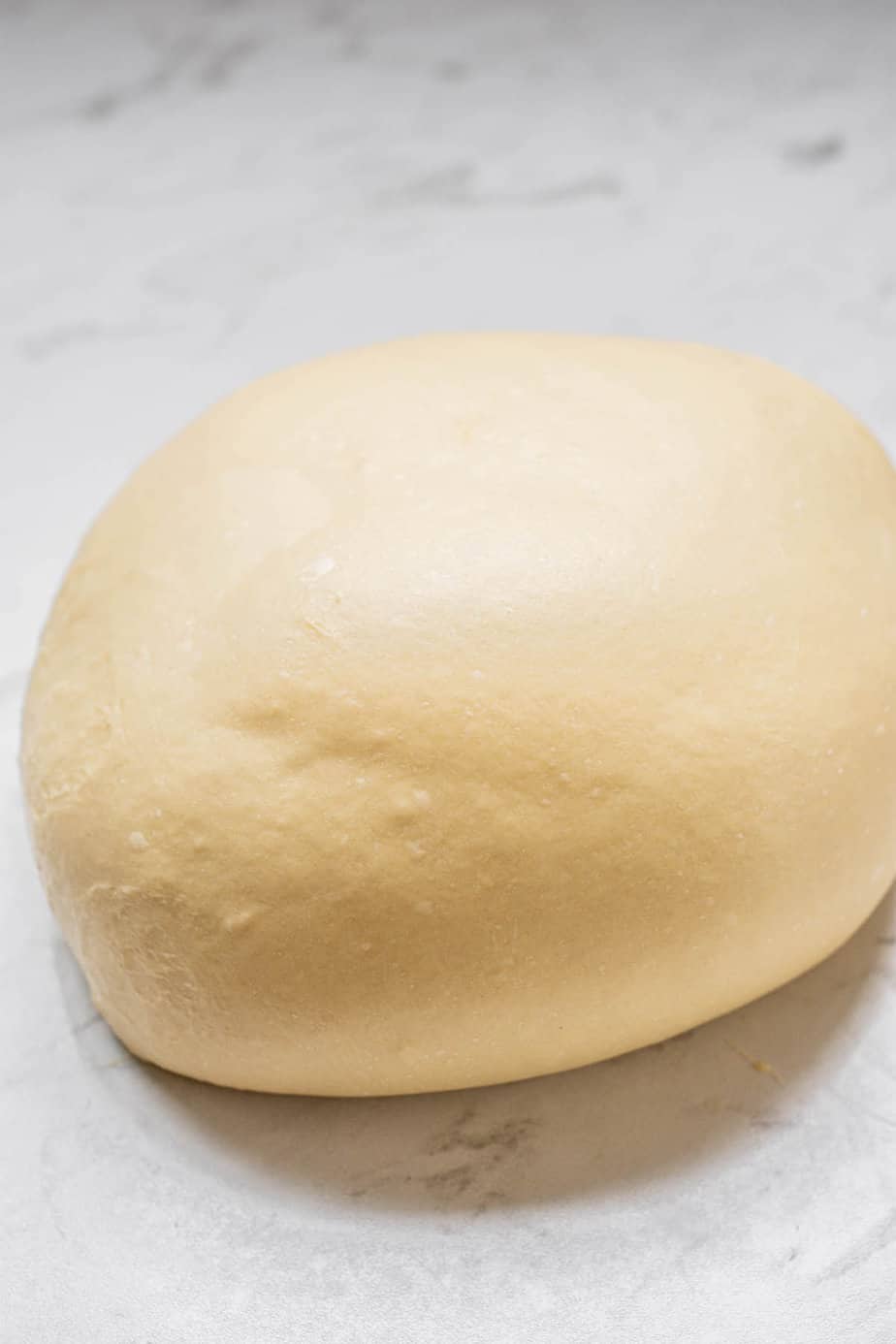
About the dough
The enriched dough for these sweet rolls is similar to sourdough brioche dough, but it’s a slightly less rich dough. This makes it easier to work by hand than with a buttery sourdough brioche. There is still the addition of eggs and butter for flavor, just not as much. It makes fluffy sourdough cinnamon rolls, sourdough monkey bread and a delicious sourdough sticky bun!
You could use this dough to make fried doughnuts too.
This dough is leavened without commercial yeast, so an active sourdough starter is required for this recipe. It will be fed as a stiff starter. Stiff starters have lower hydration, so they take longer to rise. This slower rise provides steady growth with less risk of peaking too early.
The starter is fed (in weight) overnight. 1 part starter, 2 parts flour, and 1 part water. It makes a stiff dough ball. In the morning, it will have doubled and be ready to use.
If you haven’t got your sourdough starter yet, learn how to create a sourdough starter.
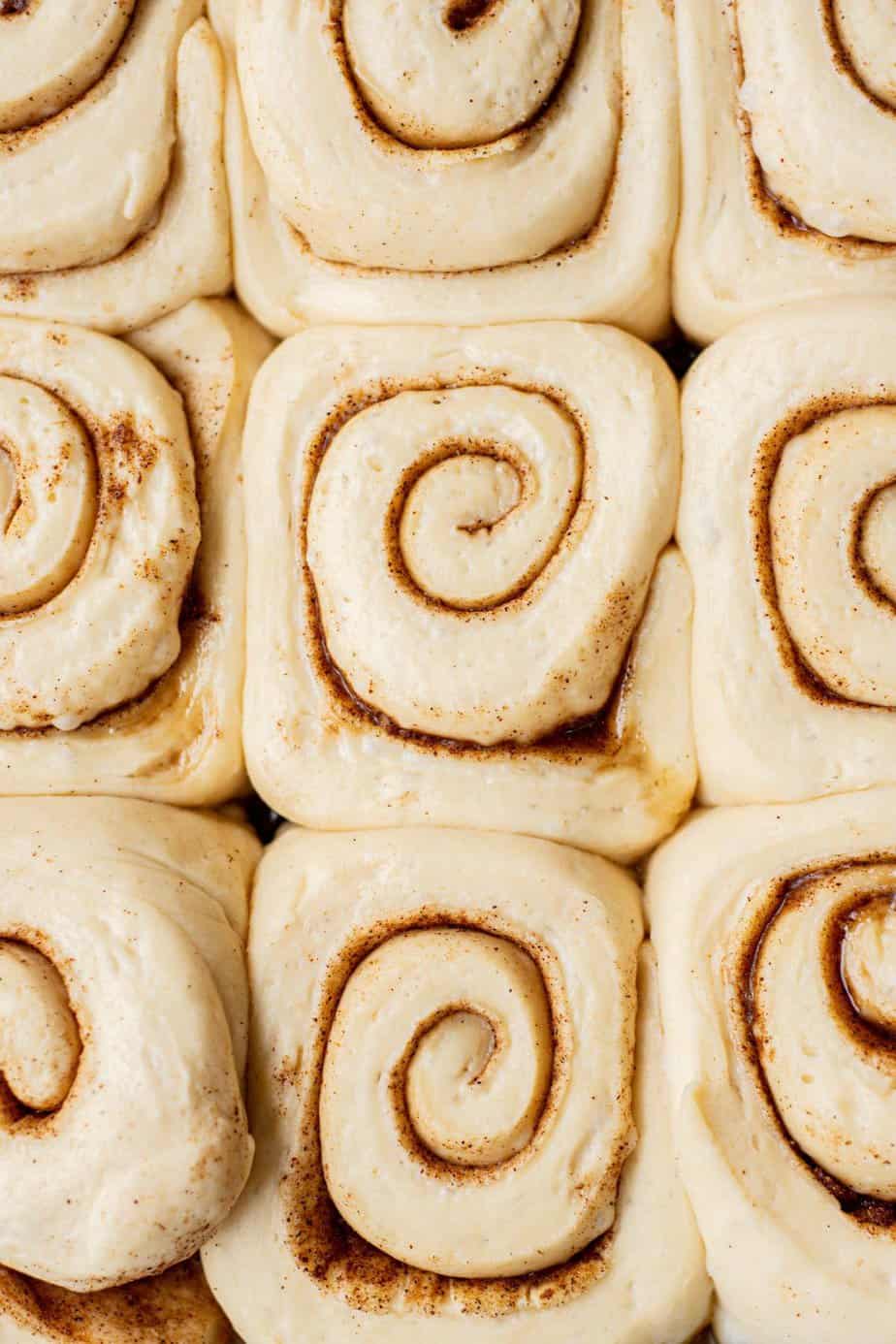
Equipment
A stand mixer fitted with a dough hook will provide the easiest results. The dough can be quite sticky, mainly when working in the butter, and the additional fat can slow down gluten development. However, it’s still possible to knead the dough by hand but be prepared to exert some extra effort.
Ingredients
The ingredient list amounts are listed in the printable recipe card at the bottom of this post. Here is just a rundown of what you will need.
- All-purpose flour or bread flour – This recipe works well with a strong all-purpose flour with around 11% protein.
- Active sourdough starter
- Granulated sugar
- Large eggs
- Whole milk
- Butter – this can be salted or unsalted butter
- Salt
Baker’s schedule
Here is a rough outline of the baker’s schedule to get an idea of the timings.
- Evening before -Feed your starter
- 9 am – Mix the dough
- 9:30 am – Let it rise in a warm spot until it has bulked out by half (approximately 4-6 hours, depending on the temperature)
- 2:30 pm – Refrigerate the dough for at least 4 hours or up to 24 hours. After this, the dough can be shaped and have its second rise until doubled in size. Then baked.
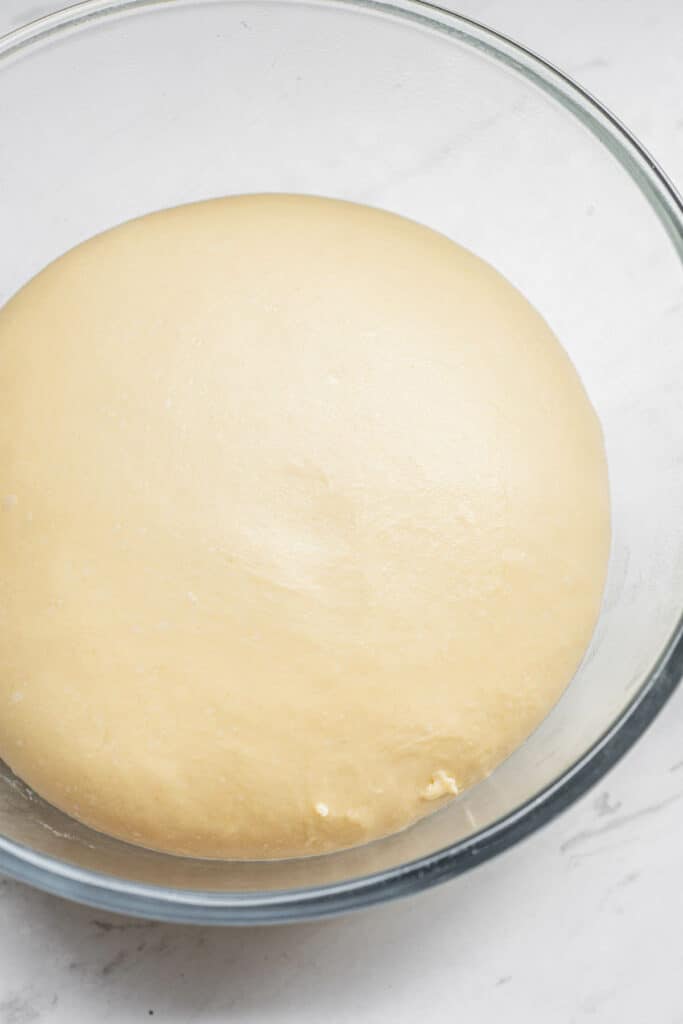
Method
Mix 30g starter with 60g flour and 30g water. Knead it for a minute or two into a stiff dough ball.
Place this into a lightly oiled jar. Brush the top of the ball dough with a little water (so it doesn’t dry out too much overnight). Loosely cover it with a lid and leave it to rise for 8-12 hours until more than doubled.

The following day
Mixing in a mixer
Add the flour, sugar, salt, eggs, milk, and all the stiff starter in the stand mixer bowl fitted with a dough hook attachment.
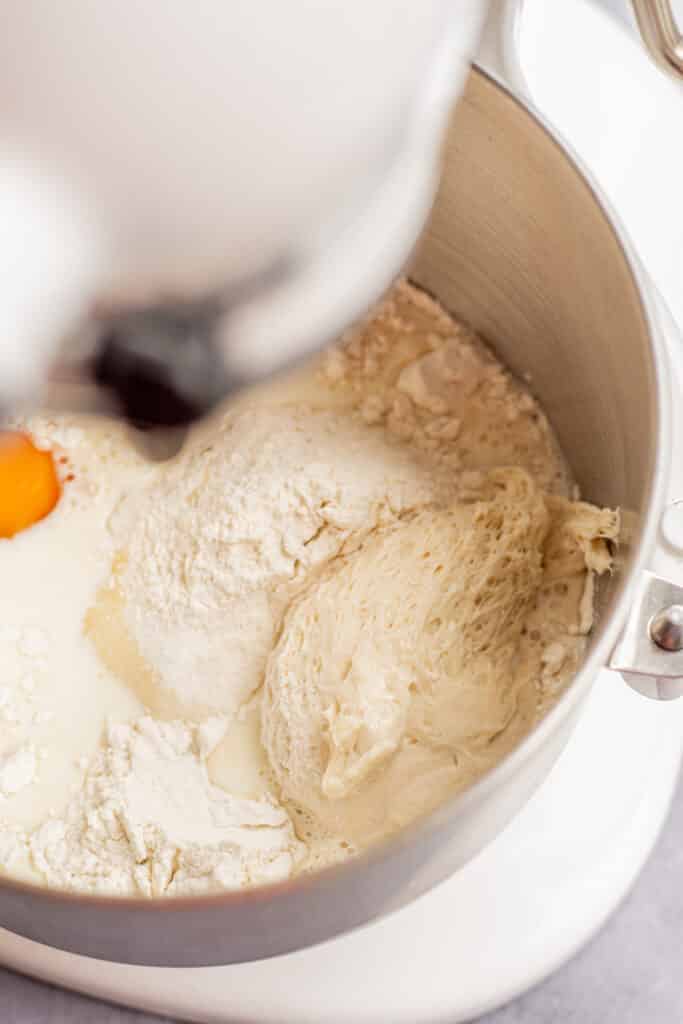
Turn the mixer on low and combine until it forms a thick but slightly sticky dough. Mix this dough on medium-low speed for around 5 minutes to begin developing the gluten.

Add the softened butter to the bowl of your stand mixer, a little bit at a time. Incorporate each cube before the next addition.
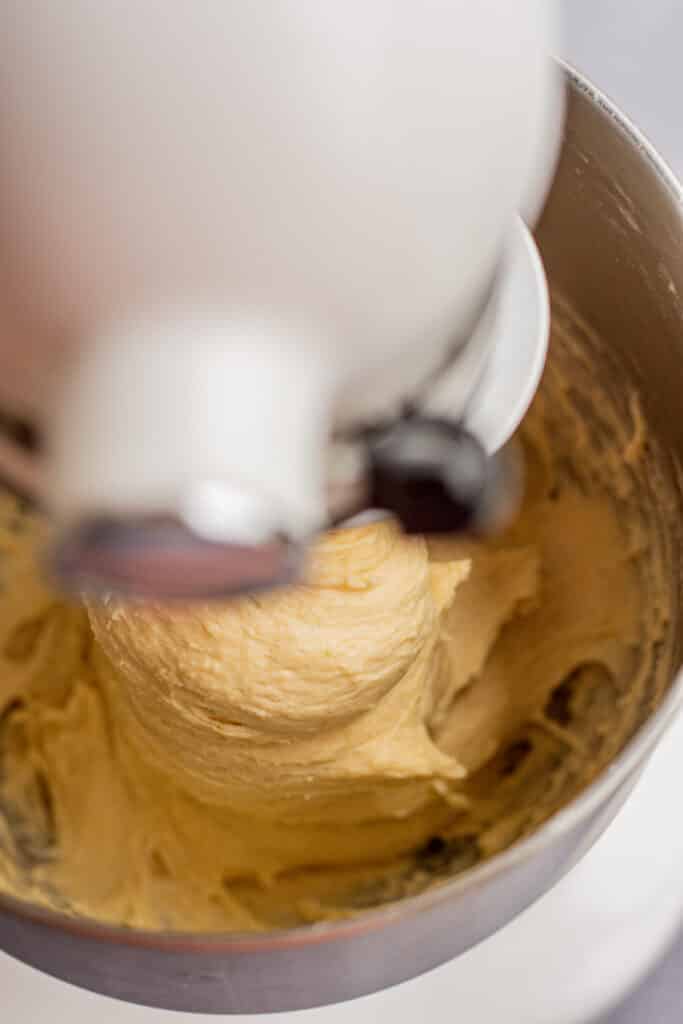
Turn the mixer on medium speed.
Keep it mixing for around 15 minutes until the sticky and soft dough strengthens, comes together, and pulls away cleanly from the sides of the bowl.
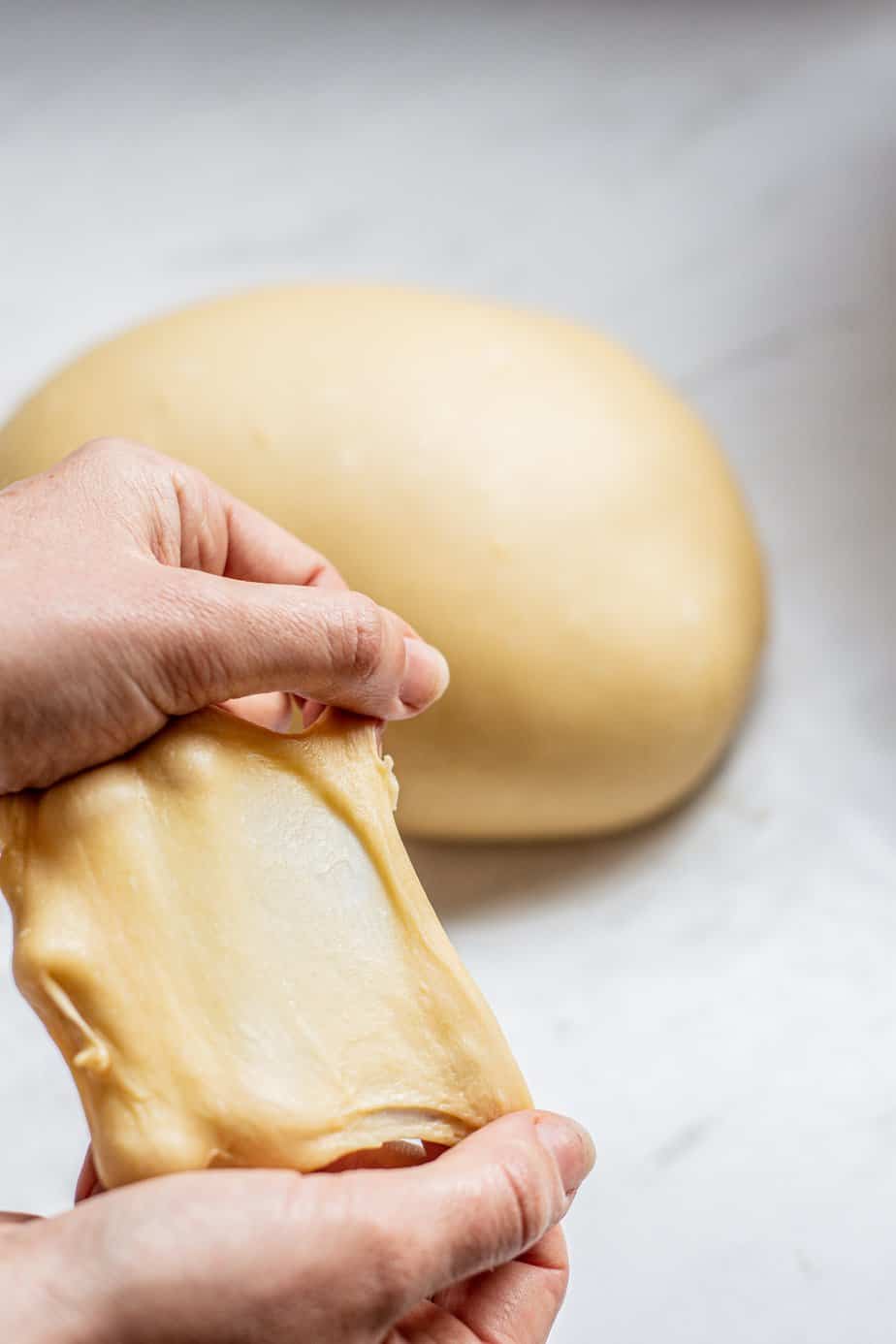
Once finished mixing, leave the smooth dough to rest for a few minutes, then grab a piece and see if you can stretch it out thin so it’s almost see-through, without it tearing. This is called the ‘window pane’ effect and shows proper gluten development.
Mixing by hand
Add the flour, sugar, salt, eggs, milk, and the ripe sourdough starter in a large mixing bowl. Use a fork or wooden spoon to mix it into a shaggy dough. Tip the dough onto a floured surface and knead it for 5 minutes to develop the gluten.
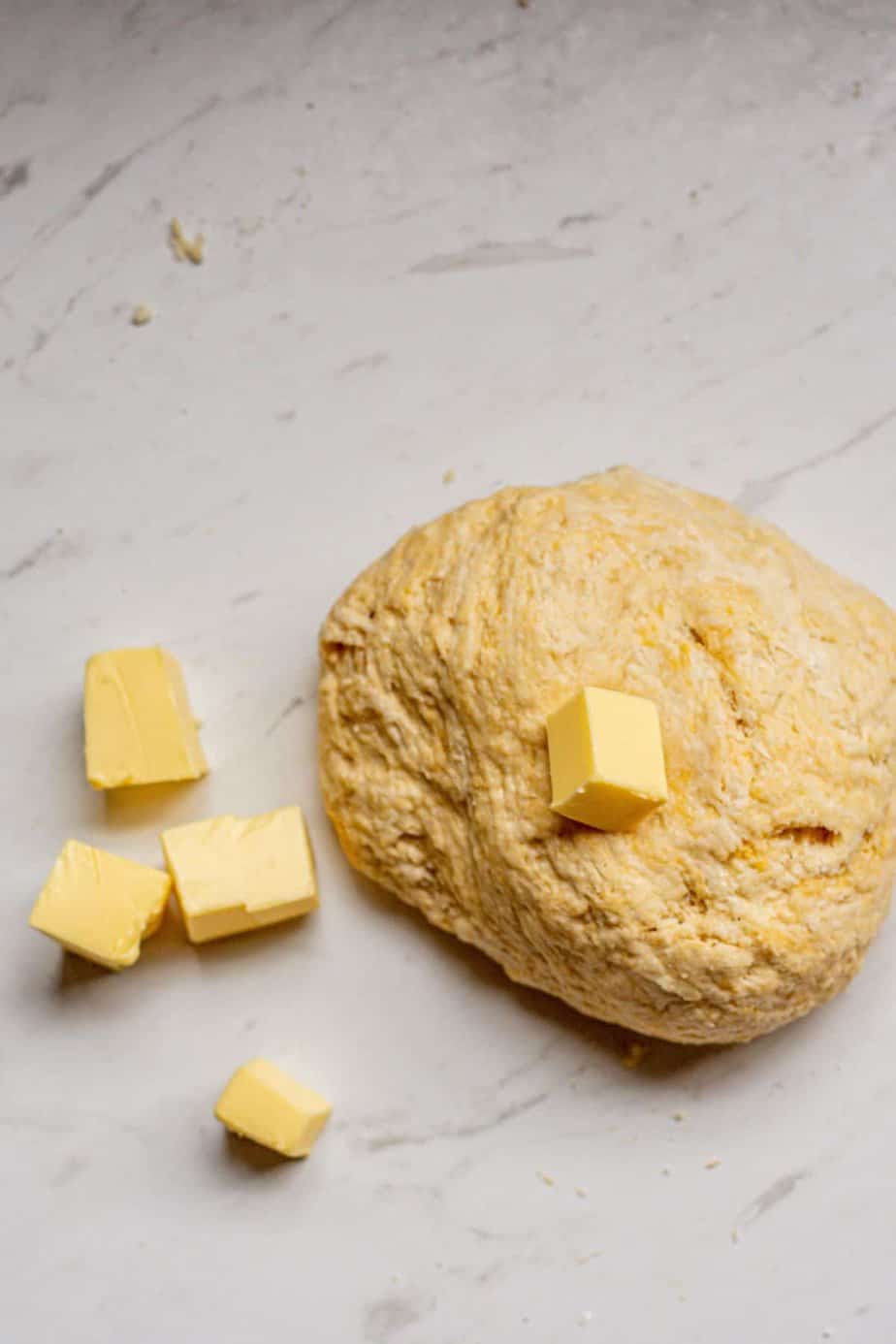
Begin to knead in the butter, a few cubes at a time. Slap and fold the dough on the bench to create strength. Slap it down, and fold it over.
Once all the butter has been incorporated, slap and fold for a minute or so more, then leave the dough to rest for 5-10 minutes, then return to it.
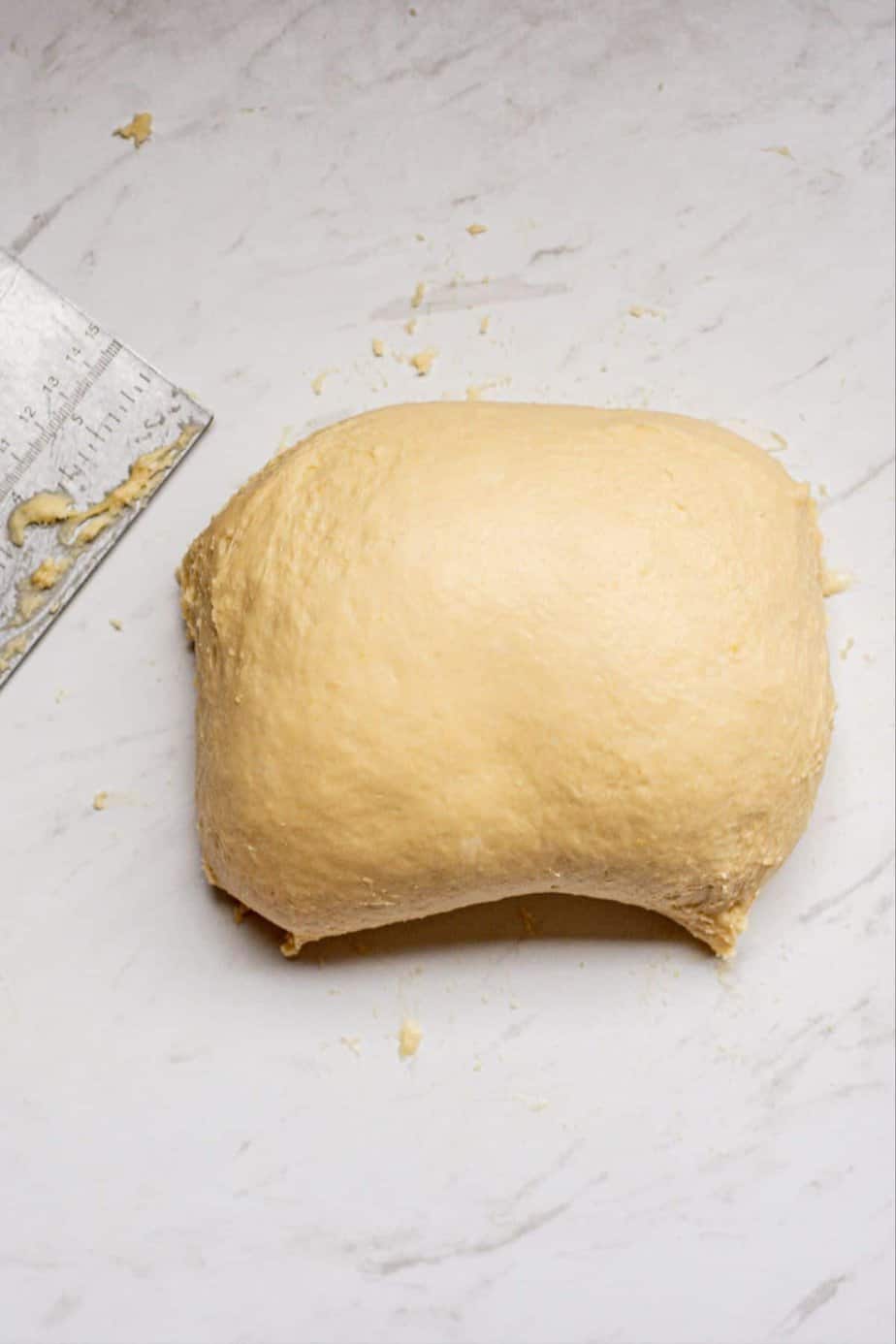
Use a bench scraper to gather up any loose pieces of dough. If at any point you need another break, take it!
It’s easier coming back to it with clean hands, and the gluten in the dough does well with rest.
Bulk fermentation
Once the dough is kneaded, it’s time for the first rise. Shape it into a smooth ball and place it into a large bowl that’s been lightly greased. Cover with a damp towel or plastic wrap. Place the dough in a warm place, ideally around 25°C / 76°F, and let it rise. It won’t double but should bulk out by at least 50%.
This will take around 4-6 hours, but the rise time will change depending on the temperature. You can create a warm and humid proofing spot by placing a large mug of boiled water in a turned-off oven and putting the dough in there. Replace the water with freshly boiled water if it cools down.

Once risen, tightly cover the dough or put in an airtight container and store in the refrigerator until you’re ready to shape it.
Final rise and baking
The shaping and baking of the final dough will depend on how you use it.
This dough makes enough to make 12 filled rolls.
Use a rolling pin to roll the cold dough into a 12×18 inch (30x45cm) long rectangle. Spread it with your favorite filling, then roll it up from the long side into a log. Cut with a serrated knife or dental floss into 12 equal pieces.
Grease or line a 9×13-inch baking dish and place the rolls in it. Cover the rolls with a damp kitchen towel or cling wrap to stop the top of the dough from drying out. Let the unbaked rolls have their final rise until they double in size.
Then bake.
Filling ideas
You can fill these rolls with a classic cinnamon sugar mixture, or something fruity! Try this basic sourdough sweet dough with:

More sourdough recipes

Sourdough Sweet Dough Recipe
A basic sourdough sweet dough recipe that makes the best cinnamon rolls, blueberry rolls, sticky buns, and more!
Ingredients
Stiff starter
- 30g starter
- 60g all-purpose flour
- 30g water
Dough
- 500g strong all-purpose flour with around 11% protein
- 50g granulated sugar
- 2 large eggs
- 200g milk
- All the stiff starter
- 8g salt
- 100g unsalted butter, softened to room temperature, cut into cubes
Instructions
The evening before
- Mix 30g starter with 60g flour and 30g water. Knead it for a minute or two into a stiff dough ball.
- Place this into a lightly oiled jar. Brush the top of the ball dough with a bit of water (so it doesn't dry out too much overnight). Loosely cover it with a lid and leave it to rise for 8-12 hours until more than doubled.
The next day
- Add the flour, sugar, salt, eggs, milk, and all the stiff starter in the stand mixer bowl fitted with a dough hook attachment.
- Turn the mixer on low and combine until it forms a thick but slightly sticky dough. Mix this dough on medium-low speed for around 5 minutes to begin developing the gluten.
- Add the softened butter to the bowl of your stand mixer, a little bit at a time. Incorporate each cube before the next addition.
- Turn the mixer on medium speed and keep it mixing for around 15 minutes until the sticky and soft dough strengthens, comes together, and pulls away cleanly from the sides of the bowl.
- Once finished mixing, leave the dough to rest for a few minutes, then grab a piece and see if you can stretch it out thin so it’s almost see-through, without it tearing. This is called the 'window pane' effect and shows proper gluten development.
- See the full post above for instructions on mixing the dough by hand.
- Once the dough is kneaded, shape it into a smooth ball and place it into a lightly oiled bowl. Cover with a damp tea towel, compostable plastic wrap, or lid. Place the dough in a warm spot, ideally around 25°C / 76°F, and let it rise.
- It won’t double but should bulk out by at least 50%. This will take around 4-6 hours, but the rise time will change depending on the temperature. You can create a warm and humid proofing spot by placing a large mug of boiled water in a turned-off oven and putting the dough in there. Replace the water with freshly boiled water if it cools down.
- Once risen, place the dough in the fridge for at least 4 hours or up to 24 hours.
Shaping and baking
- After the refrigerator proof, the cold dough can be shaped and filled with your favorite filling (see the post for filling ideas.)
- Use a rolling pin to roll the cold dough into a 12x18 inch (30x45cm) long rectangle. Spread it with your filling, then roll it into a log from the long side. Cut with a serrated knife or dental floss into 12 equal pieces.
- Grease or line a 9x13-inch baking dish and place the rolls in it. Cover the rolls with a damp kitchen towel or cling wrap to stop the top of the dough from drying out. Let the unbaked rolls have their final rise until they double in size. This can take around 5-8 hours in a warm spot.
- They can also be shaped late evening to rise overnight for 8-10 hours if your kitchen isn't too warm.
- Once risen, bake at 350°F (180°C) for 28-30 minutes until golden brown.
Recommended Products
As an Amazon Associate, a Mighty Ape affiliate and member of other affiliate programs, I earn from qualifying purchases.
Nutrition Information:
Yield: 12 Serving Size: 1Amount Per Serving: Calories: 275Total Fat: 8gSaturated Fat: 5gTrans Fat: 0gUnsaturated Fat: 3gCholesterol: 51mgSodium: 284mgCarbohydrates: 41gFiber: 1gSugar: 5gProtein: 9g






